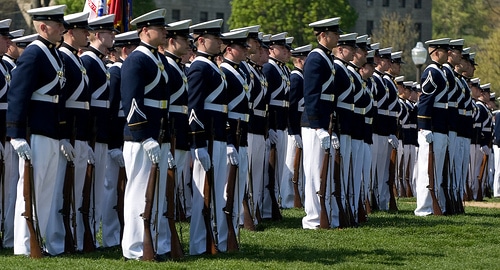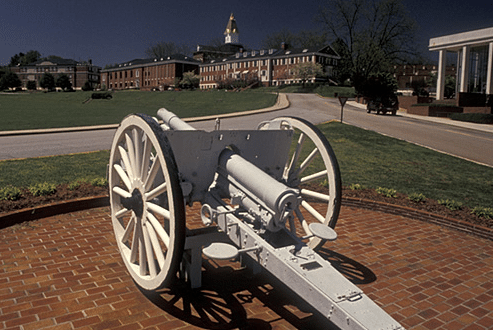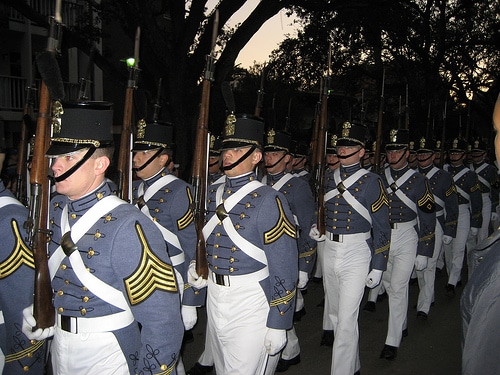
Are you a young man who is trying to decide where to go to college?
Are you drawn to the discipline, leadership, physical, and mental training provided by the military, but aren’t sure if a military career is for you?
Do you desire a college experience that will provide you with a challenging rite of passage into manhood instead of endless nights of drinking and video games?
Have you thought about joining the ROTC at college, but feel like the program isn’t immersive enough?
If you answered yes to any of these questions (or have a son who would) it’s time to look into the opportunities provided by Senior Military Colleges (SMC). Most men have probably heard the names of “Citadel” or “Virginia Military Institute” before, but likely have little idea of what kind of program these schools offer students. In short, in addition to rigorous academics, Senior Military Colleges provide the discipline and leadership training found in the military without asking for a commitment to join the military.
Why Attend a SMC?
College was once seen as a rite of passage for men, an experience that helped a boy transition into manhood. These days, college is likely to be more of an impediment to that process than a facilitator. Many of the young men I went to high school with were quite upstanding gentleman in high school, only to devolve as men once they went through college. Partying, hooking up, and wasting time is now considered a sacrosanct part of the college experience. While there’s nothing wrong with having a lot of fun when you’re young, men often graduate college without the skills in self-discipline, time management, self-reliance, and personal responsibility needed to navigate their future and become a success. They thus spend their post-graduate years quite lost, stuck between boyhood and manhood and confused about how to proceed with their life. The education found at a SMC provides a strong remedy to this dilemma. It is designed not only to educate a man’s mind, but to prepare him with the skills, values, and experiences needed to be a successful, highly motivated leader.
The Advantages of a SMC Education
Senior Military Colleges in the United States have long histories and were not designed solely for those students intent on joining the military. The founders of these schools understood that all men, regardless of their career path, could benefit from a military lifestyle coupled with academic excellence. Thus, unlike service academies and ROTC programs at civilian colleges which require commission in the military, students at SMC’s, members of what is called the Corps of Cadets, may choose to be commissioned when they graduate, or they may walk away to a life in the civilian world. While it varies from school to school, around 1/3 to ½ of graduates take a commission in the military while the rest go on to civilian careers or to graduate school. And, unlike traditional ROTC students at civilian colleges, if you do decide to seek a commission in the military, you are guaranteed an active duty position if you desire it.
The SMC Experience
At each SMC, a student enrolls in both the ROTC and the Corps of Cadets. The Corps of Cadets experience goes far beyond that of the typical ROTC program. Requiring much more than wearing a uniform once a week and attending military classes, it’s an immersive experience, similar to that found at the nation’s service academies.
The SMC experience is not for everyone. The cadet experience begins a week before the semester starts, when they must report to campus for a mini-boot camp. Heads are shaved and uniforms are donned. The cadets must learn how to march in formation, handle a weapon, take care of their uniforms, and keep their rooms clean. Beyond this initial “Hell Week,” things don’t get any easier for the freshmen. They are lead by “cadre” consisting of upperclassmen who shadow the newbies, yelling in their faces, making sure they are following the rules, quizzing them on the cadet’s code and the school’s traditions, and making them do push-ups whenever the mood strikes. Most colleges have several phases during the freshman year that are both mentally and physically grueling which new cadets must pass through to earn greater privileges and respect. At the end of freshman year, the scrubs are welcomed fully into the Corps’ ranks if they pass certain physical tests and rites of passage.
A cadets’ life is disciplined, structured, and challenging for all four years. There is a set wake-up and lights out time, mandatory study hall, and daily physical fitness training and drilling. Cadets are required to wear their uniform at all times on campus. They live together with other cadets in rooms that are subject to cleanliness inspection. Cadets are often required to eat together at certain times and must march to and from the mess hall. There is free time available each day and on some weekends, although other weekends are designated for military training.
In return for giving up the freedom of a traditional college, SMC students are shaped and molded into men of honor, discipline, and integrity. Without the distractions found at other schools, cadets can concentrate on their studies and on building themselves into the kind of men they wish to be. Senior Military Colleges are as intent on molding a man’s character as they are on boosting his intellect. Participation in the Corps of Cadets provides unmatchable leadership training. There are few other experiences in which a young man can receive hands on training in honorably leading his subordinates. Cadets become a close-knit band of brothers that quickly learn the value of teamwork, communication, initiative, and tradition. Individual cadets gain self-confidence and a sense of self-reliance. They come to embody values like integrity, honor, personal responsibility, and perseverance. They graduate from college far better men than when they entered. Plus, you get to wear a dang spiffy uniform.
There are six Senior Military Colleges in the United States. While they share many similarities, each program has its own flavor and traditions. What follows is a brief description of each of these schools.
Note: While the tuition at most SMC’s appears expensive, keep in mind that many scholarships and grants are available to cadets, especially to those who wish to accept a commission in the military.
Virginia Polytechnic Institute and State University
Location: Blacksburg, VA
Established: 1872
Total Undergraduate Student Population/Corps of Cadets: 25,000/700
ROTC Branches: Air Force, Army, Navy
Tuition: $6,332 (in-state), $18,789 (out-of-state)
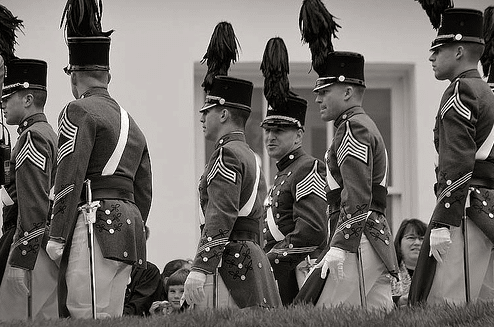
Similar only to the program found at Texas A&M, the Corps of Cadets at Virginia Tech is situated at a large public university amongst 25,000 civilian students. Not only do students have the opportunity to befriend thousands of civilian students, they also get to rub shoulders with members of all the services; cadets from the Army, Navy, and Air Force live together in dorms. Cadets live a military lifestyle, but are also free to join any and all of the clubs, fraternities, sports teams that civilian students enjoy. Plus, cadets get free admission to all home football games. Students are not obligated to join the ROTC at all and can instead choose the “Civilian Track” and participate only in the Corps.
North Georgia College and State University (The Military College of Georgia)
Location: Dahlonega, GA
Established: 1873
Total Undergraduate Student Population/Corps of Cadets: 5,000/650
ROTC Branches: Army
Tuition: $12,600 freshmen year, and $10,600 for each of your sophomore, junior, and senior years. (out-of-state cadets pay in-state tuition)
Nestled in the scenic Blue Ridge Mountains, the Military College of Georgia is a small liberal arts college attended by both civilian students and those who join the Corps of Cadets. The cadets are trained in the military lifestyle and live together in the Corps’ coed barracks, but are also free to join the normal college organizations like clubs, intramural sports, and fraternities. Cadets attend classes with traditional students, and class sizes are kept small. NGCSU is the most affordable of any of the Senior Military Colleges and issues many grants to students to defray the costs. Cadets graduate from the program with a leadership minor, in addition to the major of their choice.
Norwich University
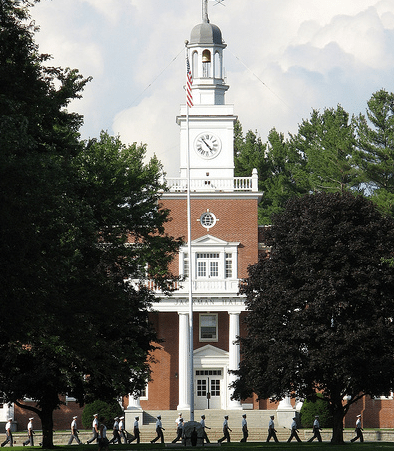
Location: Northfield, VT
Established: 1819
Branches: Army, Navy, Marines, Air Force
Total Undergraduate Student Population/Corps of Cadets: 2,000/1,200
Tuition: $24,722
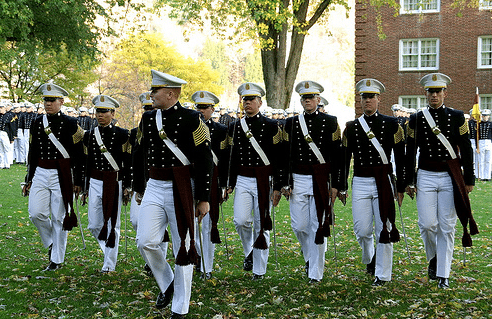
Norwich University is the oldest (and now only) private military college in the country and the birthplace of the ROTC. Cadets are required to enroll in ROTC all four years they attend the university. The Norwich cadets live in separate dormitories but share classes and extracurricular activities with the traditional students on campus. Freshmen arrive on campus as “rooks” and must pass through several phases of training to earn the title of “cadet.” Cadets have the opportunity to join special units within the Corps. The Independent Artillery Battery fires Civil War era cannons at sports games and special events. The Cavalry troop which teaches cadets horsemanship. The Mountain and Cold Weather Company takes advantage of the rugged Vermont landscape to teach cadets skills such as skiing, snowshoeing, wilderness survival, basic and advanced first aid, climbing and mountaineering, and the basics of cold weather fighting and survival.
Texas A&M

Location: College Station, TX
Established: 1876
Total Undergraduate Student Population/Corps of Cadets: 45,380/2,000
ROTC Branches: Army, Air Force, Navy Marines
Tuition: $7,844 (in-state), $22,274 (out-of-state), (includes fees)
Texas A&M boasts of having more uniformed students that produces more military officers than any other school in US outside of the service academies themselves. All cadets are required to take two years of ROTC classes their first two years; those who seek a commission continue with ROTC, those who do not remain in Corps and continue their leadership training as Drill and Ceremonies cadets. Aggie cadets have their own residence and dining facilities but rub shoulders with traditional students in classes and student organizations.
For the first 100 years of its history A&M was a military college, and many of the school’s most vaunted traditions such as the University’s Bonfire, yell practice, Aggie Muster and Silver Taps, were created by, and now carried on by cadets. About 1/3 choose to be commissioned and the rest are Drill and Ceremonies Cadets. The Corps includes special units such as the Calvary Unit, and units that train cadets who wish to become Navy Seals and Army Rangers. The most famous special unit is Fightin’ Texas Aggie Band, the world’s largest precision military marching band, which is known for its spectacular halftime shows. And all Corps cadets, whether band members or not, get to march onto Kyle field before home football games.

One of the most cherished traditions is the Senior privilege of donning the “Senior Boots,” distinctive leather riding boots which can run a cadet around $1000. Seniors are allowed to yell, “I need a fish!” to summon a freshman to help them remove the boots.
The Citadel
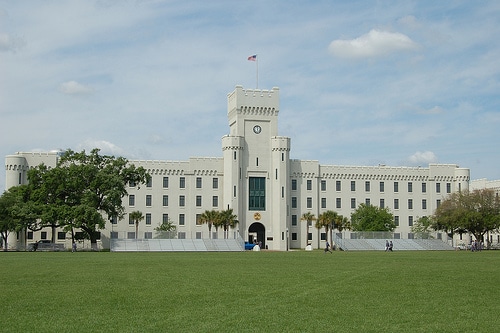
Location: Charleston, SC
Established: 1842
Total Undergraduate Student Population/Corps of Cadets: 2,000/1,900
ROTC Branches: Army, Navy, Marines, Air Force
Tuition: $16,420 (in-state), $28,920.00 (out-of-state) (including fees and room and board)
Unlike other SMC’s where the Corps of Cadets make up a small part of the student body, at the Citadel, the Corps is the student body. Traditional student take evening classes, but cadets do not share classes with them and only cadets live on campus. Cadets must undergo four semesters of ROTC training.
The Citadel, which calls itself the “West Point of the South,” prides itself on its elite reputation, strict discipline, and rich history. Having only admitted women in 1996 because of a court order, the Citadel is still a male-dominated campus; only 6% of cadets are female. The college also places a great emphasis on honor; it was only in 2007 that locks were placed on barrack doors.
While “hazing” is technically against the rules at the Citadel (and the other military colleges), the upperclassmen cadets are still famous for the harsh rites of initiation they put the knobs (freshmen, named for their shaved heads) through.
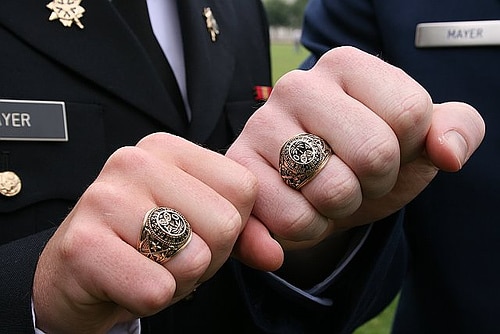
The reward for enduring this trial by fire comes during the senior year when the cadet receives a mammoth 10 karat gold Citadel ring. Earning the right to wear this “Band of Gold” is an honor of incredibly weighty significance.
Virginia Military Institute
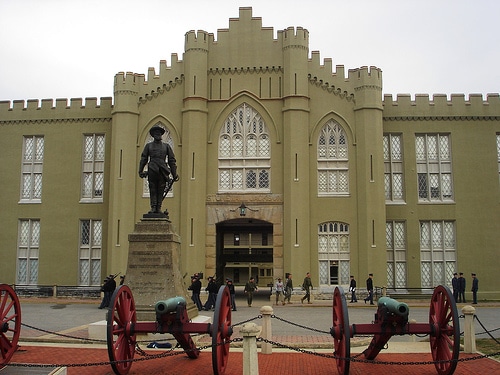
Location: Lexington, VA
Established: 1839
Total Undergraduate Student Population/Corps of Cadets: n/a/1300
ROTC Branches: Army, Navy, Air Force, Marines
Tuition: $5,262 (in-state), $22,160 (out-of-state)
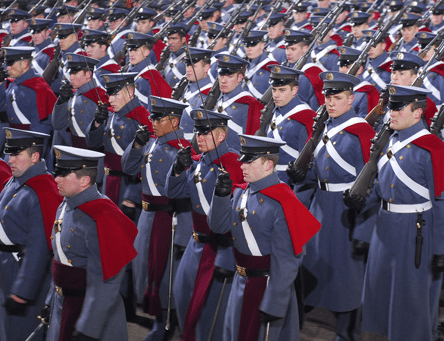
Virginia Military Institute is a place with a storied history and reigns as the oldest state-supported military college in the country. The cadets experience this history firsthand, as many of them live in the “The Old Barracks,” a National Historic Landmark built in 1848. VMI prides itself on continuity and tradition and was the last military college to admit women, which it did upon court order in 1997. Similar to the Citadel, female students today make up only around 6% of the cadets.
VMI maintains a reputation for rigorous academics and a lifestyle that is Spartan-like even by military college standards. The freshman initiation experience, known as the Ratline, is particularly grueling. “Rats” eat their meals at attention, pound out countless push-ups, and are called on morning and night runs. After a challenging test of their fitness and teamwork abilities, rats are welcomed into the VMI community as fourth classmen at a ceremony called Breakout which occurs during the second semester.
VMI cadets take the virtue of honor seriously and uphold the last “single sanction” honor code among the military academies. If any student is found guilty of a single insistence of lying, stealing, or cheating, they are expelled from the school in a “drumming out” ceremony.
Tags: College

